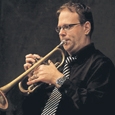(Note: Although this article is most helpful for advanced trumpet players preparing for auditions, many of the suggestions can be adapted to any instrument.)
Winning a coveted position at a music school or professional ensemble has many of the qualities of good movie. You stand, heart pounding, behind a closed door listening to the sounds of your opponent. The door opens, you enter and nervously play for the tall, graying gentleman seated behind the table. You return home and wait for your fate. As elusive as that coveted college audition or orchestra job may seem, great auditions depend on several basic skills. True professionals have mastery over five elements: sound, intonation, articulation, rhythm, and style.
Sound
While music may express that which cannot be said, Victor Hugo would be the first to agree that words help describe what makes a high-quality musical sound. Adjectives such as resonant or dull, focused or diffuse, and bright or warm can help us to perceive with a more discerning ear. For most playing situations, the ideal sound is resonant and focused, with pleasant balance of brightness and warmth. Resonance on a brass instrument does not depend about working hard or playing louder. On the contrary, it is based on keeping the embouchure relaxed so it can vibrate as freely as possible, producing a fuller sound with less air.
Intonation
Good intonation is also essential. A perfectly tuned note amplifies all of the available overtones on the instrument, creating a warm and brilliant sound. Use lip bends and lyrical etudes (played slowly) to practice centering your pitches, working toward playing every note on center without adjustment.
As your embouchure strengthens you will be able to produce a sound quality that was not possible in the first years of playing. During these years, do not blame your equipment or yourself. Strengthen your embouchure, and your sound will gradually acquire fullness and body.
Use the long tones in Schlossberg’s Daily Drill and Technical Studies to practice correct breathing, steady airflow, and lip position. Practice the exercises using mouthpiece buzzing as well as on the trumpet. When mouthpiece buzzing, strive to achieve a gentle, easy-sounding buzz and a constant airflow.
Take the time to make sure every note is perfectly centered, even if that requires playing each and every note on the page one at a time. A tuner is a musician’s best friend; there is no substitute for its honesty. Keep it on the music stand and turned on, and check it frequently.
Be sure you are playing with sufficient air and that your embouchure is not too tight or loose. These embouchure problems can make it almost impossible accurate and consistent intonation.
If you are still having trouble playing a given melody in tune, put down the instrument and sing the phrase with a tuner or piano keyboard to identify intervals you are hearing incorrectly. Once you can sing the melody accurately, you can easily and reliably locate these notes on the instrument.
As an advanced player, not only will you need to play each note in tune, but you will also need to harmonize with others, requiring you to adjust some notes slightly higher or lower than usual to match the surrounding harmony. For example, your E will need to be 14 cents lower to harmonize with a C (a major third).
In practice, when harmonizing with others, you will need to use your ear, not the tuner. However, you can experiment with a friend using the chart below to train your ear to accurately hear these common harmonies.
.jpg)
Articulation
Articulations lend definition and character a performance. They must be intentional, clear, accurate, and well-suited to the given passage. Listeners should not wonder if your notes were legato or staccato.
To refine your articulation, practice Clarke’s Technical Studies using the same articulation for an entire exercise at a time – whether legato, marcato, staccato, or accented. Be sure the tongue always hits the same place to give the exact same sound to each note.
Slow, diligent practice will enable you to hear what exactly you need. Listen carefully to what you are doing; when you can hear inaccuracies, you can fix them easily. To attain the highest rank as trumpeter, you will need flawlessly consistent articulation.
Rhythm
Rhythmic irregularities are just as obvious as out-of-tune notes. When performing, perfect rhythm is a must. Make sure you understand the rhythm – how it lines up with both the beat and how it is subdivided within the beat. This requires intellectual effort. Mark with a pencil where the beats fall; then turn on the metronome and speak the rhythm out loud, making sure that the clicks occur in the same places as the ones you’ve marked. Next, play the rhythm on the trumpet with the metronome, but on a single note. Finally, add the correct notes.
Work daily with the metronome to maintain a steady tempo and clarify your understanding of the rhythm. While it is useful to train yourself to keep the beat with your feet or toes (this requires feeling the beat internally), there is also no substitute for the unerring accuracy of a metronome. To get the best of both worlds, try playing the passage while tapping your foot, with the metronome on.
If you don’t already own a metronome, you can either get a stand-alone device or buy an app for smartphone or tablet. Whichever you buy, it should be able to play subdivisions of the beat, especially for complex passages. Once you can play accurately with the beat subdivisions, you are ready to work with larger beats.
Make sure you practice with a pencil handy. Your music is for study and active engagement, not hanging in your living room. Effective markings allow you to not waste your chops playing the same passage wrong over and over again. Be specific, concise, and legible, so that you do not have to solve the same problems tomorrow
Style
Often students play with one style: loud and fast. Once in a while that sets the perfect mood, but unless your name is Tim Morrison, some nuances will be missed. When exploring this aspect of your playing, there are three main areas you should consider: the composer’s intentions, historical period, and mood.
The Composer’s Intent
Look at the tempo marking in the music, dynamics, and any other markings. Research what each marking means. Listen to recordings of the piece, as well as other works by the same composer, to learn the appropriate sound and style. Learn to match your own playing to the recording. For contemporary pieces, you may need to contact the composer directly to obtain a recording of the piece.
If you are an advanced player, it may be illuminating to listen to recordings of many works by the composer of your new solo, excluding recordings of your actual piece (at least for a few weeks). This will allow you to flex your creative muscles in forming a distinctive interpretation.
Historical Period
From Baroque to Classical, Romantic to 20th Century, each period of music has its own palette of sounds. Learn about the composer and historical period of each piece you begin. For example, say you just got the music to Telemann’s Trumpet Concerto in D. The piece is Baroque, which means that its emotional qualities should be expressed tastefully and in moderation. This calls for clean, clear articulations and distinct contrasts between loud and soft. Once you can play the notes accurately, add musical ornaments such as mordents, trills, and appoggiaturas.
After finishing the Telemann, your teacher assigns the Hindemith Trumpet Sonata. You consult a musical dictionary and discover that a sonata is essentially a duet between the piano and trumpet. You begin to learn both parts and how these fit together. In talking to your teacher, you learn that Hindemith wrote the piece in response to the genocide in Europe during World War I. You seek ways to express the darker qualities of the piece through dynamics, vibrato, and tempo.
Mood
When a composer writes p or f in the music, it is up to you to discover what mood they may have in mind. Soft dynamics may convey mystery, suspense, or tenderness. Loud dynamics may convey passion, joy, excitement, or anger. Listen to a recording a few times. Try to determine if one feeling characterizes the whole piece or if there are many shifts in mood. Above each phrase in your music, write your ideas about what the phrase is saying.
To express the mood, you may use sharp articulations to convey anger; dynamic swells and vibrato to convey passion and emotionality. As you gain intensity, the tempo could surge forward or remain steady to convey a sense of inevitability and impending doom.
The speed and intensity of vibrato will reflect the mood as well as the historical period. You may vibrate more freely in romantic music than in Baroque pieces, where vibrato is used only occasionally as an ornament.
Using the Fundamentals for Success
A long-legged freshman with a dream of being the next Wynton Marsalis, Chris practiced whatever came easily. He knew he would somehow become a great trumpeter, but in reality, his technical mastery stalled out somewhere around Barracuda Blues.
Chris and I re-structured his practice around the five core elements, working through a tall stack of method books over the next few years – the usual suspects (Arban, Bordogni, Brandt, Clarke, Schlossberg, Stamp) as well as lesser-known ones (Brandt, Goldman, Irons, Bai, and Sachse). Each exercise was chosen to develop one of the five elements.
In fall of his senior year, Chris was almost unrecognizable compared to the player I met four years before. Flying across the country for his Juilliard audition, he opened his Haydn Trumpet Concerto in Eb on the plane and mentally played through the piece, his concentration unbroken by the activity of travelers around him. A few weeks later, his acceptance arrived.
It takes very little discipline to practice the things you enjoy, or to engage in last-minute for an upcoming audition. It requires considerably more intellectual effort and self-mastery to design your practices around the five core elements of playing. Consistent, structured study will give mastery over the instrument and long-term success.






